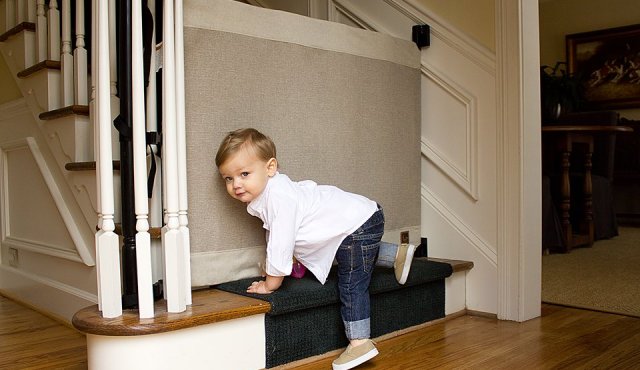If you’re the parent of little toddler, you know that it’s impossible to keep an eye on him all the times. You know just how curious can a child be, and when they start exploring the house there are certain areas you definitely don’t want them to go, and it’s important to baby-proof your home. You might have noticed them peering curiously at the stairs, and that’s when you know it’s time to invest in a baby gate to keep them out of danger.
There are tons of different baby gates available, and I have some simple tips to take into consideration when you’re searching for a baby gate to use in your home. Baby gates are the first line of defense for keeping babies and toddlers out of areas that aren’t completely baby-safe.
If you live in a multi-story home, you’ll need gates as soon as your little one starts crawling around (or scooting), usually around 7-8 months.
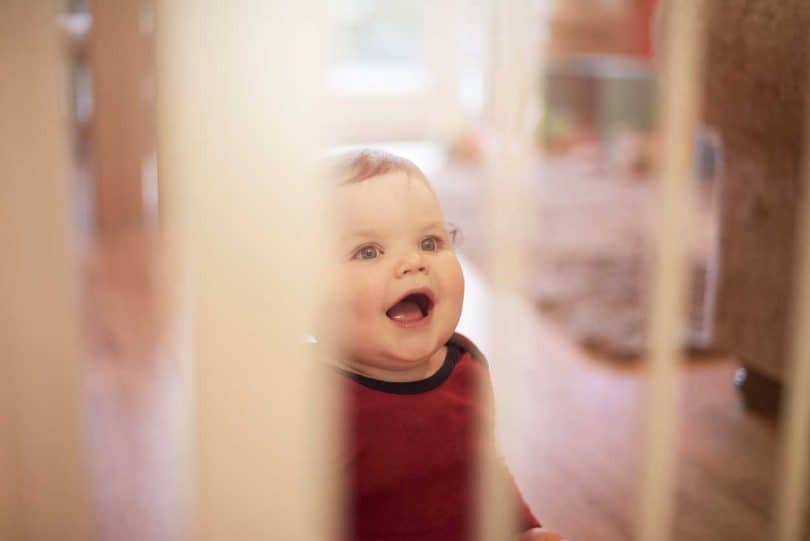
Before choosing the gates you need to know several things:
Where do you want to put the gate?
You can find a child gate to use in a normal doorway or entryway, at the bottom or top of stairs, or even in extra-wide or odd spaces.
How do you want to mount the gate?
A pressure mount is best if you plan on moving the baby gate around a lot because it is easy to reinstall and does not use any hardware to set up. A hardware mount uses screws to securely keep the gate connected to the wall or doorway. A pressure mount baby safety gate should never be used in certain places, including the top of stairs.
Will the gate be in a high or low-traffic area?
If you will be placing a baby gate in a high traffic area, a gate with a swinging door (pass-thru design) is best because you can easily slip in and out when needed. If you need a gate for an area where you will not enter and exit as frequently, a barrier gate may be appropriate to help ensure baby stays where you have determined baby is safe.
What type of material do you prefer?
Baby safety gates come in a variety of materials such as metal, plastic, fabric or wood, giving you the choice to select what is most desirable for your home, yourself and baby.
Pressure-Mounted Baby Gates
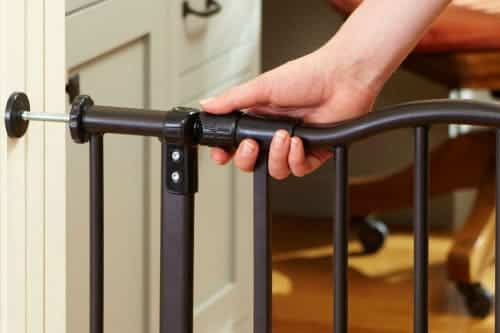 These are the most common type of baby gate. If you’re familiar with how tension rods used for shower curtains work, these pressure mounted baby gates function the same way. You simply extend the gate to the size you need between the walls or door jam and pressure keeps it in place. Pressure mounted gates can be a great solution, because they’re usually inexpensive and versatile: you can use them in practically any space that’s small enough for the gate to fit. Pressure-mounted gates are best used in places like the bottom of a staircase or between rooms to keep your baby from roaming. If you need a gate to block off the top of a staircase or any other place where your baby could fall, it’s recommended that you use a hardware-mounted baby gate instead.
These are the most common type of baby gate. If you’re familiar with how tension rods used for shower curtains work, these pressure mounted baby gates function the same way. You simply extend the gate to the size you need between the walls or door jam and pressure keeps it in place. Pressure mounted gates can be a great solution, because they’re usually inexpensive and versatile: you can use them in practically any space that’s small enough for the gate to fit. Pressure-mounted gates are best used in places like the bottom of a staircase or between rooms to keep your baby from roaming. If you need a gate to block off the top of a staircase or any other place where your baby could fall, it’s recommended that you use a hardware-mounted baby gate instead.
Advantages to pressure-mounted baby gates:
- Easy to set up and move from place to place
- Don’t have to screw into your walls/banister (okay for bottom of stairs)
- Cheaper (usually)
- Larger selection
Disadvantages:
- Can slip and fall under a baby’s weight if not installed correctly
- Big dogs can bust through them
- Should not be used to divide areas with a height difference, like the top of stairs
Hardware-Mounted Baby Gates
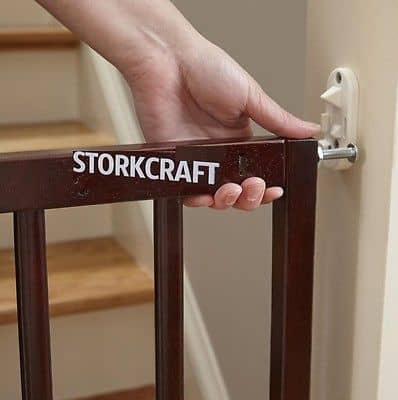 Unlike pressure-mounted gates, hardware-mounted gates are a more secure, permanent solution that mounts securely to the walls of your home with screws or brackets. If you need to block off the top of a staircase or any other place with uneven floors that your baby could fall on, these are the perfect baby gates for the job. Don’t use a pressure-mounted gate in any place that is very important to keep your baby away from. The obvious downside to hardware-mounted gates is that they’re a more permanent solution: when you remove them, they’ve permanently marked up your wall or door.
Unlike pressure-mounted gates, hardware-mounted gates are a more secure, permanent solution that mounts securely to the walls of your home with screws or brackets. If you need to block off the top of a staircase or any other place with uneven floors that your baby could fall on, these are the perfect baby gates for the job. Don’t use a pressure-mounted gate in any place that is very important to keep your baby away from. The obvious downside to hardware-mounted gates is that they’re a more permanent solution: when you remove them, they’ve permanently marked up your wall or door.
Advantages to hardware-mounted baby gates:
- Can support your baby’s weight without slipping; unlikely to be rammed/toppled by larger dogs
- No bottom threshold (typically) to trip over
- The only safe choice for the top of stairs
Disadvantages:
- Cannot be taken down in a hurry (unless they have a quick release feature)
- Installation is more time consuming than for pressure-mounted gates
- Leaves holes in walls/woodwork when removed
Different Styles: Metal, Wood & Plastic Baby Gates
Obviously, metal gates are by far the most strong and secure type of gate, and you’ll find both pressure and hardware-mounted baby gates that are made of metal. I’d recommend using a metal, hardware-mounted gate at the top of stairs.
Wood and plastic baby gates can be very useful, too. Although they’re not quite as secure as metal gates, it doesn’t mean they’re unsafe. Again, don’t use a wood or plastic pressure-mounted gate at the top of stairs, but if you need a gate to keep your baby out of a certain room or area, you’ll be just fine with one. If you’re opting for a 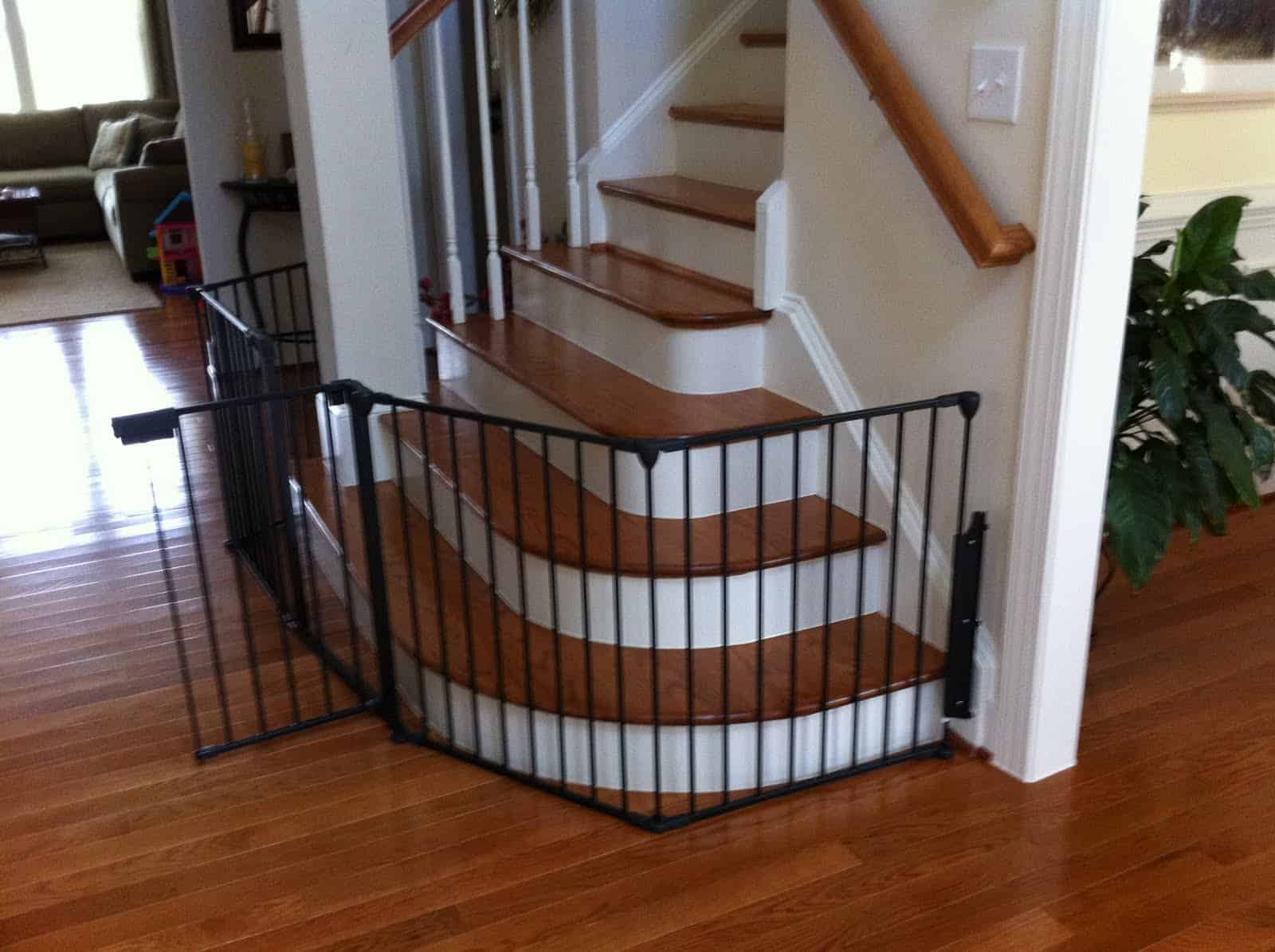 wooden baby gate, make sure that it’s completely smooth and sanded which will keep it free from slivers.
wooden baby gate, make sure that it’s completely smooth and sanded which will keep it free from slivers.
What if I Can’t Gate Off a Certain Area?
Modern homes may have areas that make it difficult to fit a baby gate properly. If yours has a spot that might be difficult to gate off with a traditional baby gate, you might have better luck with a super-wide gate. If this won’t work, you can also purchase gates that come in segments and allow you to section off any area with a custom fit.
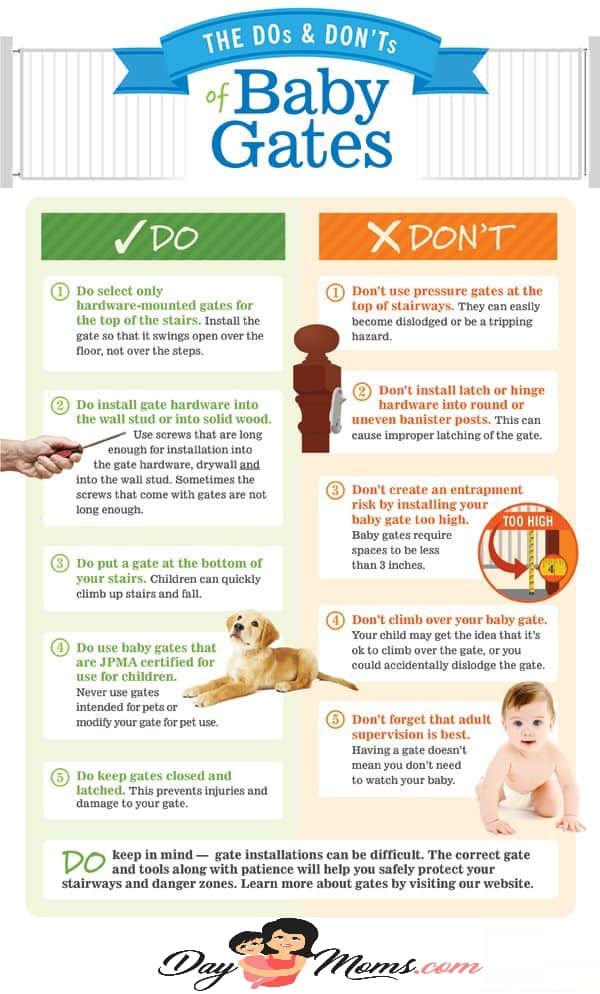
Installing the Gate
When it comes time to install the gate, the first thing that you should do is thoroughly read the instruction manual so that you know how to properly install it. This is extremely important! When installing a gate at the top of a staircase or any other dangerous area, be sure that you situate it so that the door swings inwards instead of toward the stairs for maximum safety.
- Hardware-mounted gates: Since these gates are permanent, require marking up the walls of your home and are generally used in dangerous areas, be very sure that you know what you’re doing before you attempt to install it. When using screws or brackets, be sure that you’re drilling into wooden wall studs and not just drywall.
- Pressure-mounted gates: These are easier to install, but still be sure that you do it properly. To install a pressure-mounted gate, simply tighten the tension bar between the walls or door jam until it’s snug and securely in place.
